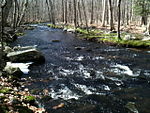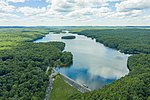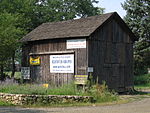Trout Brook Valley State Park Reserve
1999 establishments in ConnecticutEaston, ConnecticutParks in Fairfield County, ConnecticutProtected areas established in 1999State parks of Connecticut ... and 1 more
Use mdy dates from August 2023

Trout Brook Valley State Park Reserve is a 300-acre (120 ha) parcel owned by the state of Connecticut that is part of the larger Trout Brook Valley Preserve (also known as the Trout Brook Valley Conservation Area), located in Easton, Connecticut. The full conservation area covers 1,009 acres (408 ha) and comprises several contiguous parcels in the towns of Easton and Weston, bordering the southeast corner of the Saugatuck Reservoir. It is managed by the Aspetuck Land Trust. The state park portion of the preserve offers opportunities for hiking and hunting.
Excerpt from the Wikipedia article Trout Brook Valley State Park Reserve (License: CC BY-SA 3.0, Authors, Images).Trout Brook Valley State Park Reserve
Bradley Road,
Geographical coordinates (GPS) Address Nearby Places Show on map
Geographical coordinates (GPS)
| Latitude | Longitude |
|---|---|
| N 41.245555555556 ° | E -73.3425 ° |
Address
Bradley Road
06883
Connecticut, United States
Open on Google Maps









